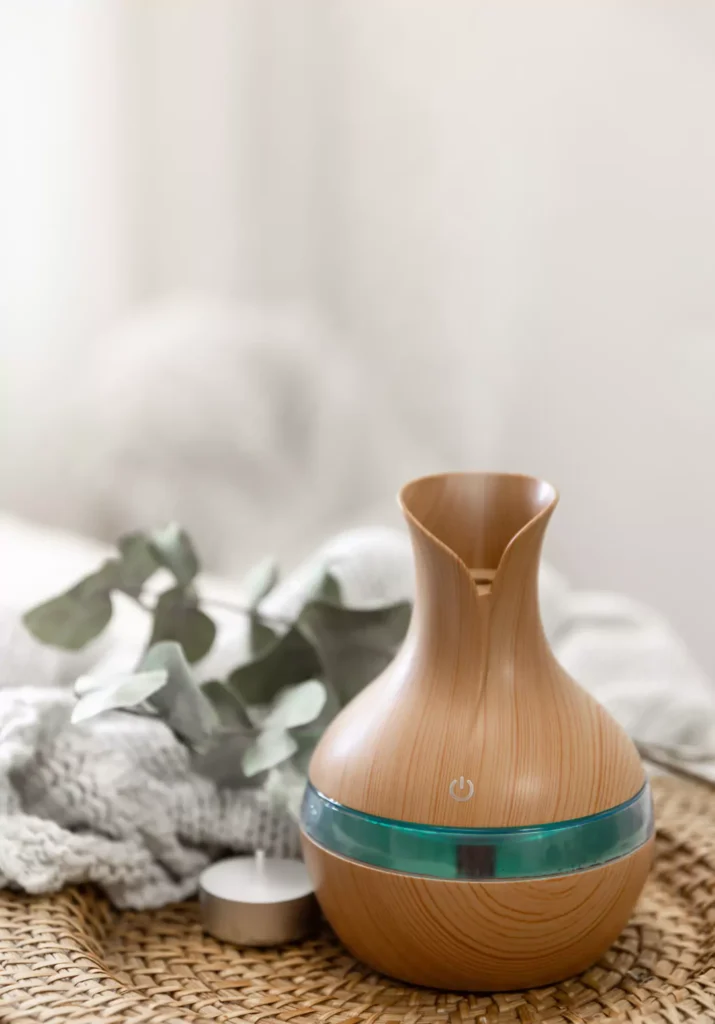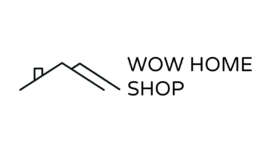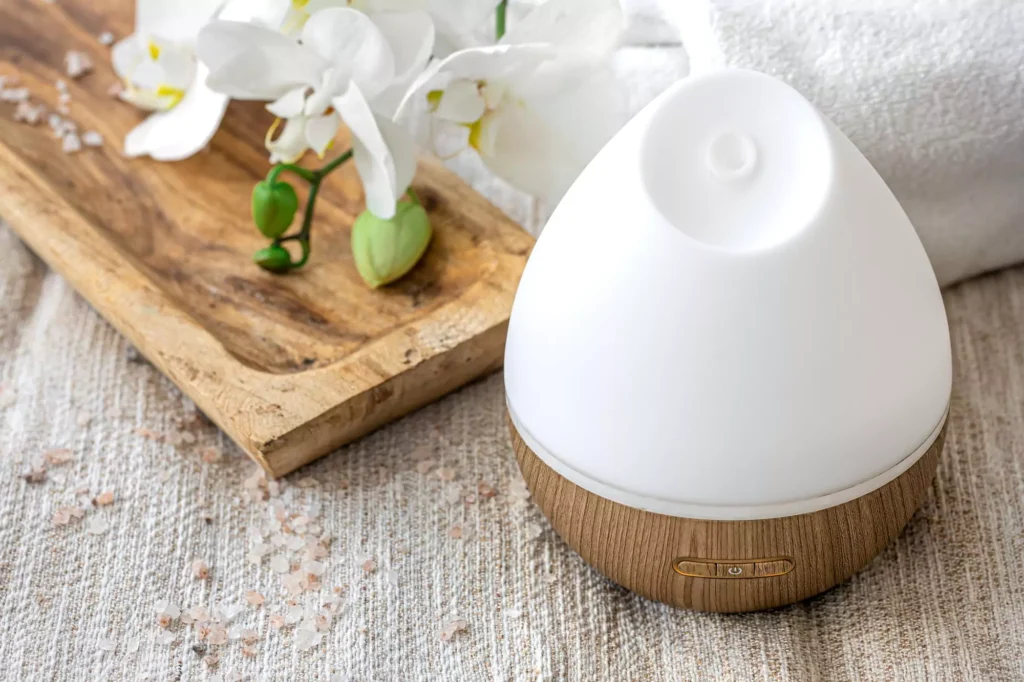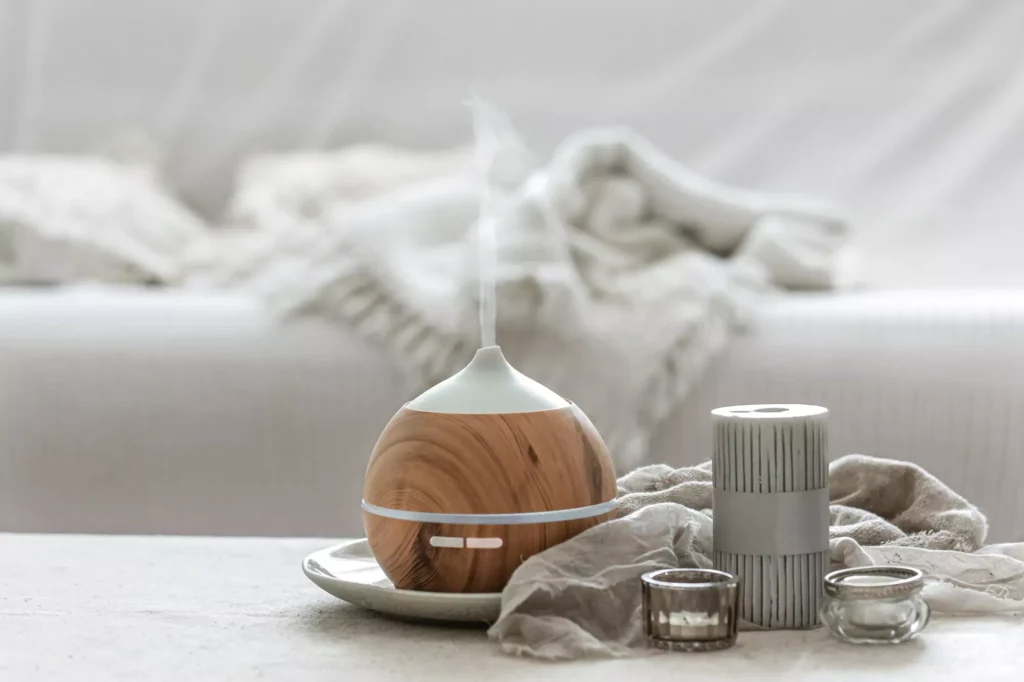So there I was, standing in my living room, staring at the remains of my trusty old diffuser… a cheap Amazon impulse buy that had finally given up after two years of loyal service. RIP, little buddy. As I scrolled through replacement options, I found myself falling down a research rabbit hole. Ultrasonic? Nebulizing? Cold mist? Waterless? Wait, what’s the difference, and why are some of these things $150 more than others?
Three days and approximately 47 open browser tabs later, I’d become weirdly obsessed with the nebulizing versus ultrasonic diffuser debate. And let me tell you, aromatherapy enthusiasts have OPINIONS. Like, surprisingly strong ones.
If you’re currently in that same confusing place, debating which type to buy while being bombarded with technical jargon and passionate Reddit threads… I got you. Let’s break down this aromatherapy showdown in terms actual humans can understand. By the end, you’ll know exactly which diffuser type deserves your hard-earned cash.
Meet Our Aromatherapy Contenders
Before we dive into the cage match, let’s get to know our fighters.
What’s a Nebulizing Diffuser, Anyway?
Nebulizing diffusers are the fancy glass contraptions that look like something from a chemistry lab. No water, no dilution—just pure, undiluted essential oil being atomized into tiny particles and released into the air.
The first time I saw one at my bougie friend’s apartment, I thought it was some kind of avant-garde whiskey decanter. Nope! Just a very expensive way to make her living room smell like a spa.
Nebulizing diffusers use pressurized air to break essential oils into microscopic particles, creating a fine mist. Think of it like those perfume testers at department stores that spray a fine mist when you press the bulb—but automatic, continuous, and way more sophisticated.

And What About Ultrasonic Diffusers?
Ultrasonic diffusers are the more common type you’ve probably seen everywhere from Target to your yoga instructor’s Instagram. They’re usually plastic or ceramic, often dome-shaped, and they need water to function.
These devices use ultrasonic vibrations (hence the name) to agitate water mixed with essential oils, creating a fine, cool mist. The ultrasonic vibrations break down the essential oils into tiny microparticles that get suspended in water vapor and dispersed into the air.
I bought my first ultrasonic diffuser after a particularly stressful week at work. Did it fix my problems? No. Did my apartment smell amazing while I stress-cleaned at 2 AM? Absolutely.
How Each Actually Works
Let’s nerd out for a minute on how these diffusers actually do their thing.
Nebulizing Diffusers: The Technical Breakdown
Ever used a perfume atomizer? That’s essentially what a nebulizing diffuser is, just way more high-tech. Here’s the step-by-step:
- Essential oil sits in a glass reservoir or tube.
- An air pump generates a pressurized air stream.
- This air stream passes over a small tube (think of a tiny straw).
- As air passes over the tube, it creates a vacuum that pulls oil up the tube (thank you, Bernoulli principle from high school physics!).
- The oil gets blown out the top of the tube and smashes against a deflector or baffle.
- This impact breaks the oil into micro-sized particles—essentially atomizing it.
- These tiny particles get dispersed into the air as a fine, dry mist.
No water, no heat, no dilution—just pure essential oil transformed into breathable particles. It’s basically the cold-pressed juice version of aromatherapy—pure, potent, and priced accordingly.
Ultrasonic Diffusers: The Technical Breakdown
Ultrasonic diffusers are more like high-tech humidifiers with aromatherapy benefits. Here’s what’s happening inside:
- You fill a reservoir with water and add a few drops of essential oil.
- The oil floats on top of the water.
- A small ceramic or metal disc beneath the water vibrates at an ultrasonic frequency… we’re talking millions of times per second.
- These vibrations agitate the water, creating minuscule vapor droplets that contain tiny particles of the essential oil.
- A small fan or the force of the vibrations propels this water-oil mist up and out into your room.
The result is a gentle, cool mist that adds both scent and a bit of humidity to your space. It’s like the smoothie version of aromatherapy—diluted, gentle, and more affordable.
Head-to-Head Comparison
Alright, let’s get to the main event. I’ve broken down the key factors that actually matter when choosing between these diffuser types, based on both extensive research and personal experience (yes, I now own both types 🙂 the obsession got real).
Round 1: Scent Intensity & Purity
Nebulizing Diffusers
Holy aromatherapy, Batman! These things pack a punch. Since they’re dispersing pure, undiluted essential oil, the scent is powerful and fills a room quickly. If you’re using aromatherapy for therapeutic purposes rather than just “make room smell nice” purposes, this matters. The first time I used my nebulizer with eucalyptus during a cold, I could actually feel my sinuses clear within minutes.

Ultrasonic Diffusers
The scent from ultrasonic diffusers is noticeably more subtle. Since the essential oils are diluted in water, what you’re getting is a gentler experience. It’s like the difference between espresso and drip coffee—both have their place, but one is definitely more intense than the other. I find the ultrasonic perfect for bedrooms and smaller spaces where I want a hint of scent, not an aromatherapy ambush.
Winner
Nebulizing diffusers take this round for pure scent power and therapeutic potential. But if you prefer subtlety, you might consider that ultrasonic win.
Round 2: Essential Oil Consumption
Nebulizing Diffusers
These oil-guzzlers will blow through your essential oil budget faster than I demolished a bag of chips during the 2020 lockdown. Because they use undiluted oil, they can empty a 10ml bottle alarmingly quickly if you run them constantly. After getting my first nebulizer electricity bill, I immediately put mine on a 15-minute timer.

Ultrasonic Diffusers
Much more economical! Since you’re only using a few drops of oil mixed with water, your fancy $30 bottle of frankincense will last months instead of weeks. For the budget-conscious who still want to use high-quality oils, this is a significant factor.
Winner
Ultrasonic diffusers handily win the economy round. Your wallet will thank you.
Round 3: Noise Level
Nebulizing Diffusers
There’s no getting around it—these puppies make noise. The air pump that pressurizes the system creates a constant humming or buzzing sound. Some high-end models are quieter than others, but none are silent. When I first got mine, my cat stared suspiciously at it for two days straight.

Ultrasonic Diffusers
Most are whisper-quiet, with just a very soft bubbling sound that’s actually pretty soothing. You can sleep with these running right next to your bed without issue. Some even market themselves as sleep aids partly because of their gentle, white-noise-like sound.
Winner
Ultrasonic diffusers take this round for their library-approved quiet operation.
Round 4: Maintenance Requirements
Nebulizing Diffusers
Here’s where things get a bit annoying. The glass components need regular cleaning to prevent oil buildup and clogging, usually with high-proof alcohol. The tiny tubes and components can be fiddly cleaned properly. That said, since there’s no water involved, you don’t have to worry about mould or bacteria growth.

Ultrasonic Diffusers
These require diligent cleaning to prevent mold and bacteria growth in the water reservoir. Ideally, you should empty and wipe down the reservoir between uses and do a deeper clean with white vinegar regularly. I learned this the hard way when I noticed black specks in my neglected diffuser. Not my proudest moment.
Winner
Tie. Both have maintenance needs, just different ones. Nebulizers have more complicated cleaning but less frequent; ultrasonics need more regular but simpler cleaning.
Round 5: Humidity Factor
Nebulizing Diffusers
These add no moisture to the air whatsoever. In dry climates or winter months when your skin feels like the Sahara, this might be a downside. However, for humid environments or for those with mold concerns, this can be a major plus.

Ultrasonic Diffusers
These double as mini-humidifiers, adding a small amount of moisture to the air. During winter in my apartment with forced air heating, this is actually a nice bonus feature. My houseplants and sinuses appreciate the boost. However, in already humid environments, this could be unwanted.
Winner
It depends on your climate and needs. Advantage ultrasonic if you want added humidity; advantage nebulizing if you don’t.
Round 6: Coverage Area
Nebulizing Diffusers
These powerhouses can cover significantly larger areas—many can effectively scent rooms of 800+ square feet. When I run mine in my open concept living/dining area, the scent reaches every corner within minutes.

Ultrasonic Diffusers
Most ultrasonic diffusers are designed for single rooms and smaller spaces, typically covering areas of 200-400 square feet effectively. They can work in larger spaces, but the scent will be very subtle.
Winner
Nebulizing diffusers win for their superior coverage area.
Round 7: Price Point
Nebulizing Diffusers
Prepare your wallet for pain. Quality nebulizers typically start around $75 and can easily run $150-200 for the nicer models. Plus, as mentioned earlier, they consume more expensive essential oils faster. I had to justify my purchase as a “wellness investment” to ease the sticker shock.

Ultrasonic Diffusers
Much more budget-friendly, with decent models available from $20-60. Even the premium ultrasonic options rarely exceed $100. Combined with their economical oil usage, they’re significantly less expensive both up-front and long-term.
Winner
Ultrasonic diffusers by a landslide for the budget-conscious.
Round 8: Design and Aesthetics
Nebulizing Diffusers
Often feature beautiful handblown glass and wood components, making them statement pieces in your decor. Many look like artistic sculptures rather than appliances. The downside? The beautiful glass components are also more fragile. My cat has given mine some very concerning looks.

Ultrasonic Diffusers
Available in countless designs from sleek and modern to natural wood-look finishes. Many include color-changing light features. They’re typically made of plastic or ceramic, making them more durable but sometimes less visually impressive than their glass nebulizing counterparts.
Winner
Nebulizing diffusers generally win on pure aesthetics, but ultrasonics offer more variety and practical durability.
Best Use Cases: When to Choose Each Type
Rather than declaring an overall winner (because honestly, they excel in different situations), let’s talk about when each type shines brightest.
When Nebulizing Diffusers Are Worth The Splurge
For therapeutic aromatherapy: If you’re using essential oils for specific health concerns like respiratory support, immune boosting, or serious stress management, the potency of nebulizers makes them more effective.
For large, open spaces: If you need to cover a large area or open-concept living space, nebulizers have the power to get the job done.
For humid environments: If you live in Florida or another high-humidity location, the waterless operation is a major advantage.
For aromatherapy purists: If you’re serious about your oils and want the unadulterated experience of pure essential oils without water dilution, nebulizers deliver the authentic experience.
For those with aesthetic priorities: If you want your diffuser to be a beautiful focal point that guests will comment on, many nebulizers are stunning pieces of functional art.
I primarily use my nebulizer when I’m specifically using aromatherapy for a purpose—like diffusing eucalyptus and tea tree when fighting a cold, or rosemary when I need to focus intensely on a project. It’s my “serious business” aromatherapy tool.
When Ultrasonic Diffusers Make More Sense
For bedrooms and sleep support: The quiet operation and gentler scent make ultrasonics ideal bedroom companions, especially when loaded with sleep-promoting oils like lavender.
For dry climates or winter use: The added humidity is a welcome bonus in dry environments or during winter months with indoor heating.
For all-day everyday use: The economic operation makes ultrasonic diffusers practical for daily, extended use without breaking the bank on oil costs.
For households with kids or pets: The gentler scent concentration is often better in homes with little ones or furry friends who may be sensitive to intense aromas.
For aromatherapy beginners: If you’re just starting your essential oil journey, the lower investment and easier maintenance make ultrasonics a great entry point.
My ultrasonic diffuser serves as my everyday workhorse—it’s what I use for general ambiance, gentle background scenting, and sleep support. It’s my “casual aromatherapy” tool.
Essential Oil Compatibility
Not all essential oils perform equally well in both diffuser types:
Thick, resinous oils like myrrh, vetiver, and sandalwood can clog nebulizing diffusers unless diluted with lighter oils. They work fine in ultrasonic diffusers since they’re already being diluted with water.
Citrus oils perform beautifully in nebulizing diffusers, releasing their bright, uplifting scents effectively. They work in ultrasonics too, but with less impressive results.
Very expensive oils like rose or jasmine absolute stretch much further in ultrasonic diffusers due to the dilution factor, making them more economical to use.
When I’m using pricey oils like frankincense or neroli, I stick to my ultrasonic. For everyday oils like sweet orange or eucalyptus, the nebulizer gets the call.
The Practical Decision Guide: Making Your Choice
After all this information, you might still be wondering which one to actually buy. Here’s my practical advice:
- If your budget allows, eventually get both. They serve different purposes and complement each other well. I use my ultrasonic daily and my nebulizer for specific therapeutic needs or when entertaining.
- If you must choose just one:
- Go ultrasonic if: You’re budget-conscious, new to aromatherapy, plan to use it in bedrooms, have a dry climate, or want the most versatile option.
- Go nebulizing if: You’re using aromatherapy for specific health benefits, have a larger space to cover, live in a humid climate, or are a serious essential oil enthusiast.
- Consider a compromise: Some newer hybrid diffusers offer both ultrasonic and waterless operation modes, though they typically don’t perform quite as well as dedicated single-function diffusers.
Brand Recommendations Worth Considering
Based on personal experience and extensive research, here are some solid options in each category:
Nebulizing Diffusers:
- Organic Aromas Raindrop (my personal favourite, beautiful and effective)
- ArOmis Wood and Glass Professional
- Pilgrim Sofia
Ultrasonic Diffusers:
- Vitruvi Stone Diffuser (sleek design, reliable performance)
- InnoGear Ultrasonic (budget-friendly but works great)
- URPOWER 2nd Version (my first diffuser, still working years later)
- doTERRA Petal Diffuser (if you’re already in the doTERRA ecosystem)
- Young Living Desert Mist (for Young Living oil users)
The Bottom Line: There Is No “Better”—Only “Better For You”
After my deep dive into the nebulizing vs. ultrasonic debate, I’ve come to one clear conclusion: there is no objectively “better” option. There’s only what’s better for your specific needs, space, and aromatherapy goals.
Think of them like tools in a toolkit—a screwdriver isn’t “better” than a hammer; they just do different jobs. Similarly, nebulizing and ultrasonic diffusers excel at different aspects of the aromatherapy experience.
I started with an ultrasonic and added a nebulizer later as my aromatherapy practice evolved. That approach works well for most people—begin with the more affordable and versatile ultrasonic option, then consider adding a nebulizer if you find yourself craving more intensity or therapeutic benefits.
Whichever you choose, your nose will thank you. And your stress levels probably will too.





Pingback: Why Portable Aromatherapy is the New Self-Care MVP - Wow Home Shop
Pingback: Office Stress? Try These USB Diffusers Immediately - Wow Home Shop